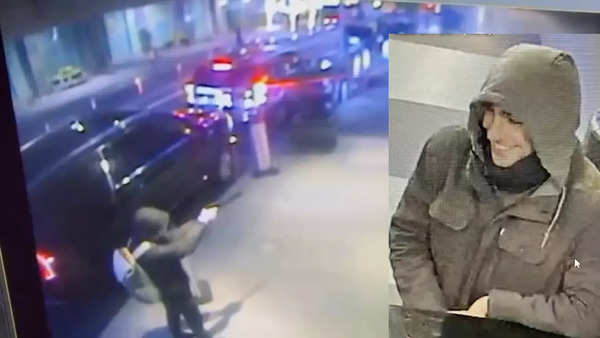At first glance, the assassination of UnitedHealthcare CEO Brian Thompson seemed like the work of a meticulous mastermind — Luigi Mangione, the suspected killer who moved through the streets of New York City like a ghost, leaving almost no trace. But as authorities pieced together the trail left behind, it became clear: this assassin may have planned his moves with precision but stumbled over key mistakes that ultimately unraveled his escape.
Experts are calling it a study in contradictions. “You see careful planning on one side and careless execution on the other,” said retired FBI agent Steve Moore, as quoted by CNN. “It’s as if he meticulously planned the perfect crime, but skipped the part about covering his tracks.”
Here’s how the killer’s plan unraveled—and how his missteps turned a master plan into a public spectacle.
Luigi Mangione’s well-planned arrival
To avoid the scrutiny of airports, the suspect, identified as Luigi Mangione, chose the anonymity of a Greyhound bus. Paying cash and leaving no digital footprint, Mangione arrived in Manhattan on November 24, a full 10 days before the killing. He checked into a hostel using a fake ID and paid for everything in cash, ensuring no credit card trail linked him to the city.

“He understood how to disappear in plain sight,” said former NYPD Deputy Commissioner Richard Esposito. “But even the best-laid plans have cracks.”
Also read: Mangione arrested with ‘ghost gun’: What you need to know about these untraceable weapons
Mangione’s fatal mistakes
Mangione wore a mask in public, avoiding security cameras, but lowered it just once—when a hostel employee flirted with him. That moment of human connection proved to be his undoing. “That brief smile, that fleeting interaction, gave investigators the clearest image of his face,” said John Miller, a law enforcement analyst.
And it wasn’t his only blunder. The suspect left behind a trail of discarded items—an energy bar wrapper, a Starbucks water bottle, and even a burner phone—providing authorities with DNA evidence and a partial fingerprint. While none matched existing databases, it was enough to keep investigators on his trail.

“He thought he was being clever, but leaving behind so much evidence was amateurish,” said criminologist Casey Jordan. “He either overestimated his ability to outsmart investigators or underestimated their reach.”
A chilling precision
The attack itself was executed with eerie precision. Surveillance footage shows Mangione hiding behind a car just minutes before Thompson walked by. At exactly 6:44 am., he approached the CEO from behind and fired a single shot with a “ghost gun”—an untraceable weapon equipped with a silencer.
“This wasn’t random,” said former FBI agent Ken Gray. “He knew Thompson’s schedule, his route, and how to make a quick exit.”
Also read: Did Luigi Mangione’s assassin video game past hint at CEO Brian Thompson’s murder?
Immediately after the attack, Mangione fled on an electric bike, abandoned it in Central Park, hailed a cab, and boarded an interstate bus. The calculated getaway suggested rehearsals, Gray added, calling the suspect’s escape route “a choreographed performance.”
The break in the CEO murder case
Mangione evaded capture for five days, but his freedom ended not in the shadows, but under the fluorescent lights of a McDonald’s in Altoona, Pennsylvania.
A sharp-eyed employee recognized him from widely circulated photos and alerted authorities. When police arrived, they found Mangione armed with another ghost gun and carrying several fake IDs—one of which tied him directly to his New York activities.

The lessons learned
Law enforcement experts say the case is a stark reminder of how even the most elaborate plans can unravel. “He planned the perfect crime but failed to think through the aftermath,” said Moore. “Every mistake compounded the next, until his arrest became inevitable.”
For NYPD Commissioner Jessica Tisch, the case highlights the power of collaboration between law enforcement and the public. “Tips from ordinary people, amplified by media coverage, brought this fugitive to justice,” she said.
